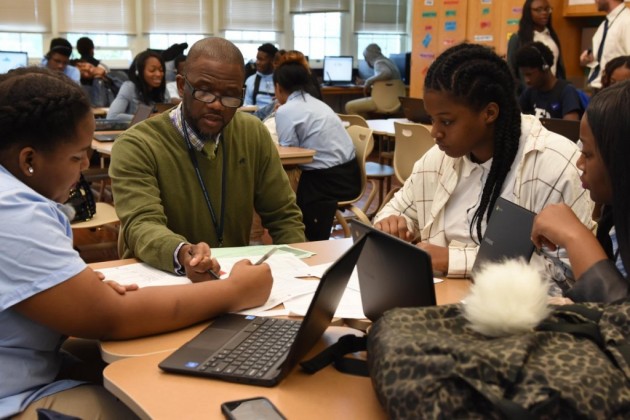Amidon-Bowen Elementary Sees Success in City Initiative
For students at Amidon-Bowen Elementary School, walking and biking to school is not only a healthy way to start the day, but now a safe choice, too.
Beginning in September of this school year, the school has been participating in a national program called Safe Routes to School, and the goal is to educate youth, specifically elementary school children, on pedestrian and bicycle safety.
Funded by a $1 million grant, the school’s program, works along with Toole Design Group, a consulting agency, in order to put safe transportation changes into action for students and the school’s community.
“By working together we are able to take all of the recommendations for the school’s community, like curb extensions or cross walk improvements and forward them to District Department of Transportation (DDOT) in order to get those changes made,” Kara Baer, dean of students and Safe Routes to School program director at Amidon-Bowen said.
The program also works to address the issue of education. According to the National Safety Council, 85.7 percent of all non-fatal pedestrian crashes in the United States occur in urban areas while only 14.3 percent occur in rural areas. “We are in Southwest, so there’s a lot of construction going on, and the new stadium has drawn more people down here so the area is heavily trafficked,” Baer said. “It’s not hard to see why this program is so important.”
To assist in educating the students, the school has coordinated programs with the Washington Area Bicyclist Association, in which students were taught pedestrian and bicycle safety during the PE class time. As a part of International Walk to School Day, the students participated in a school wide poster contest in Oct. 2008, and to encourage parent involvement, students were given the opportunity to map their route to school with their parents.
“The program is school wide and it’s helping us identify what percentage of our students walk, are driven, or bike, and what improvements we can make to make sure there are no issues as they make their way to and from school,” Baer said.
Amidon-Bowen is one of 13 public and chartered elementary schools in the District that participate in the program. According to DDOT, the program’s initiatives are to educate children, pay for more traffic enforcement in school zones, install more sidewalks, and pilot more schools. The end goal is not only for healthier children, but for less traffic.
“School-related trips account for up to 25 percent of morning traffic congestion and our job is to improve mobility,” Rebecca Garrison, executive director of the 50 Corridor Transportation Management Association in California, said. “We are also training a generation of kids to make smarter choices about transportation.”
Is it working, though?
“There is definitely increased awareness,” Baer said. “Rather than stepping out in the street without thinking, [the students] will walk to the crosswalk and wait for the signal.”
With several ongoing construction projects in the area, there are a few closed sidewalks in the school’s community. Since Bowen closed last school year and merged with Amidon Elementary School, some students are coming from a further distance, according to Baer.
“There are no safety issues with the program. We only had one incident this year involving a vehicle and one of our students, so we want to make sure that our students are walking the safest and most direct route possible,” Baer said.

